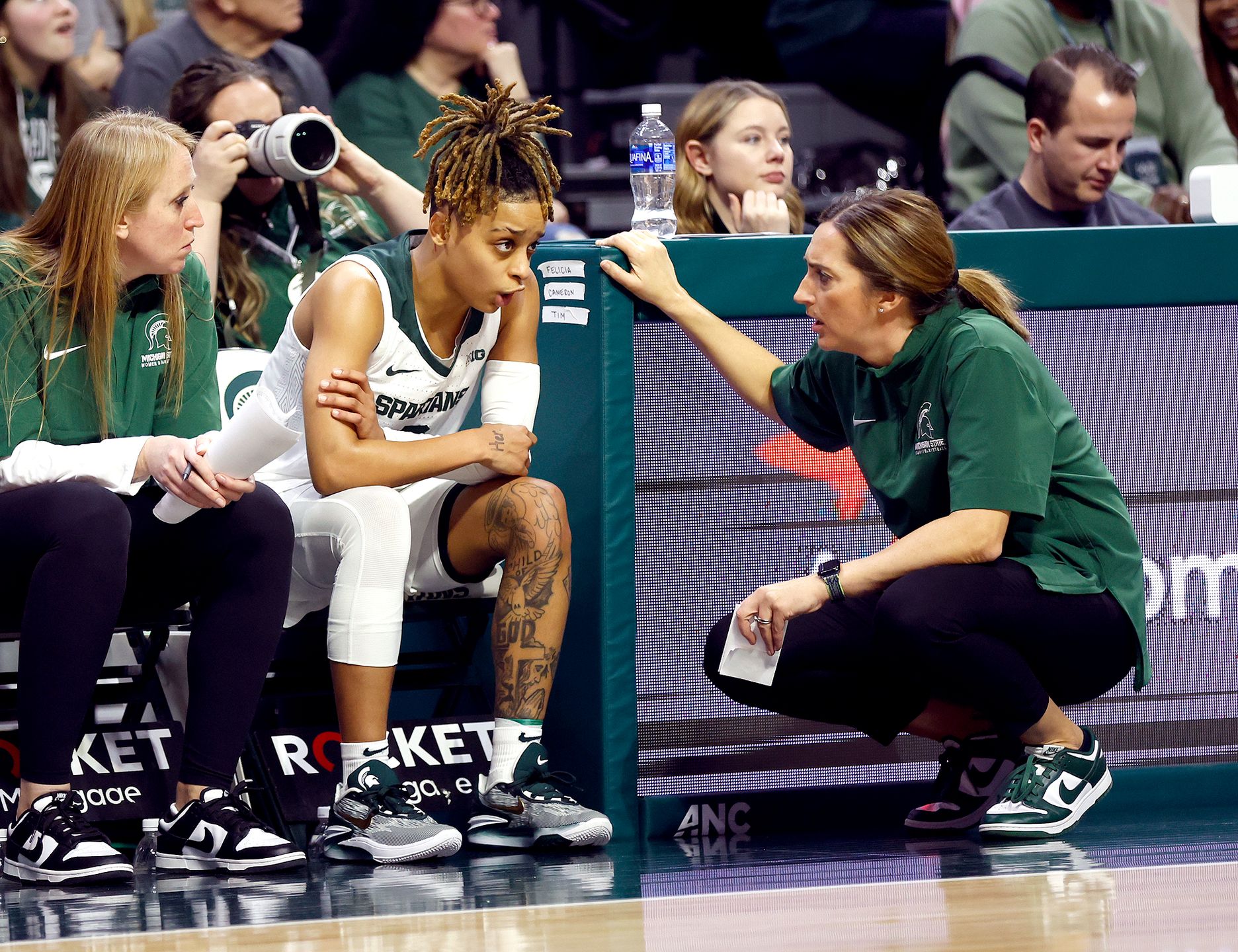‘The numbers to show it’
After two 8-21 seasons at Bowling Green, the Falcons took a giant leap forward in 2020-21, finishing 21-8. The hallmarks of Fralick’s success started to recrystallize: play fast, share the ball, take smart shots.
By 2022-23, when the Falcons finished 30-7, Fralick’s team attempted the most field goals in the country, had the seventh-highest number of steals per game and the 11th-best assist-to-turnover ratio. They also had five players who averaged 10 points or more per game.
In her first season at Michigan State, it’s been no different. The Spartans have five players averaging double figures and another averaging over nine points per game. They also rank first in the nation in assist-to-turnover ratio and fourth in 3-pointers made.
Take a look at their shot chart, and it’s not much different from Karl Smesko’s Florida Gulf Coast Eagles,
a program that’s perfected the 3s-and-layups philosophy. Fralick, though, doesn’t explicitly articulate the analytics of 3s and layups with her players.
“I think analytics are important. I don’t think they tell the whole story, but they’re an important part of the story,” Fralick told
The Next’s Howard Megdal on
Locked On Women’s Basketball. “But a lot of it is just that our offense generates shots in those spots, and they’re just better shots over the course of the entire game.”
The type of shots Fralick’s offense prioritizes is just one piece to the puzzle, though. They also like to play fast and they like to share the ball. Contrary to other teams that have more scripted plays — screen here, pass here, drive here — Fralick’s system gives her players the freedom to make decisions on the fly, almost like a quarterback reading the defense to decide which receiver to throw the ball to.
“The reality is it is harder to stop players when they’re just making a play,” Cameron explained. “We love allowing players the freedom. It’s a fun system to play in. It’s a fast tempo, fast pace. You empower the players to make some of their own decisions and put other people in the best position to be successful.”
For a player like Hagemann, the system’s been a perfect fit.
In just one season, she’s gone from averaging 9.3 points per game and shooting 39.5% from the field to averaging 12.8 points per game and shooting 50.3% from the field. Her 2-point percentage has jumped more than 10 points; her 3-point percentage has jumped nearly nine.
Other returning players have seen their numbers jump, too.
Moira Joiner, a fifth-year, is flirting with a 50/40/90 (FG%/3-PT%/FT%) season. She averaged 10.1 points per game last year; now she’s tied with senior
Julia Ayrault (who averaged 3.6 points per game last season) for the team’s leading scorer at 14.9 points per game.
Add in junior
Jocelyn Tate, who followed Fralick from Bowling Green, and she’s provided a valuable bridge to the rest of the players learning how the system works.
“It makes it hard to guard because there are so many different things we can get out of it,” Tate said of Fralick’s offensive system. “It’s hard to scout us because you don’t really know what we’re going to do. We’re reading what the defense is giving us.”
The Spartans are pretty unequivocal in praising the offense. Lots of teams try to play a similar style of basketball; few have this level of success, particularly involving so many different players throughout the course of the game.
“I think everyone says you want to play fast. We have the numbers to show it, as far as possessions and how many shots we get,” Kasza said. “Everyone on any given night can be the leading scorer. … I do think we are unique in the pace and I do think we are unique in the way that we share the basketball.”

